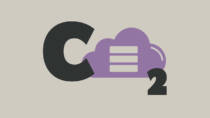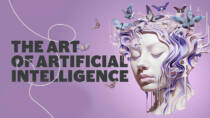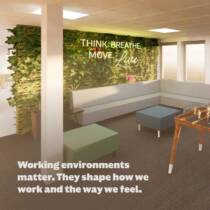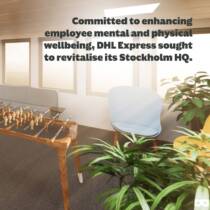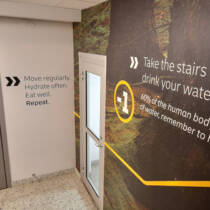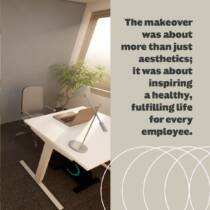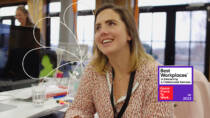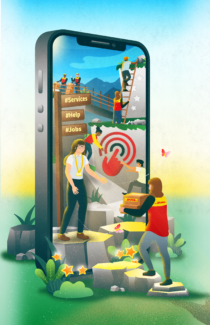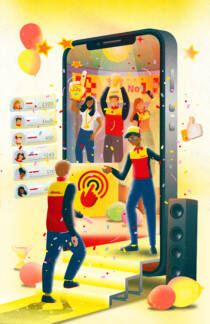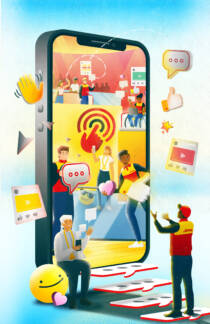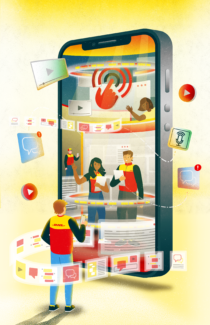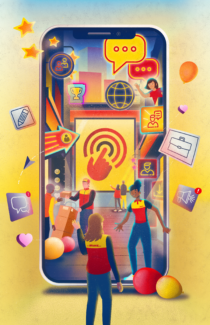8 B Corp agencies you'll love working with
By Sally Pritchett
CEO
If you’re looking to partner with great people, experts in their field, who care about being responsible and looking after our planet, then we have the B Corp agencies for you...
Since we certified as a B Corp over a year ago, the movement of purpose led businesses committed to the highest levels of ethical standards has grown exponentially.
As a business who believes in helping to drive system change, this is really exciting. As a business looking to improve the sustainable credentials, ethical standards or even honesty and transparency of their supply chain this is even more exciting.
There are now a plethora of great agencies in the B Corp movement to choose from so we’ve gathered a selection of our favourites, and are delighted to introduce you to them and their strengths.
Across the Pond
Go to them for: If you’ve got a complex tech story you need to make more human
When it comes to experts in their field, you don’t get much better than Across the Pond, working with the tech worlds finest from Google to Meta they are not just committed to but laser focused on helping tech brands create a better world.
You can check out some of their work here and give and find out more about what they do here.
Footprint
Go to them for: Expert help with your digital marketing
Footprint are the friendliest digital team we’ve ever met and seamlessly educate their clients on the mysteries of digital marketing from algorithms and impressions to the dark art of SEO whilst also driving their performance forward.
Check out some of their success stories here and don’t hesitate to ask them for an introductory call here.
Jago
Go to them for: Expert personal branding
Jago are experts in empowering people to master their reputations through building impactful personal brands. Their team of EQ experts, anthropologists, film makers and storytellers work together with their clients to develop a clear identity, game plan and necessary tools to find and cultivate audiences.
Check out what their customers say about them here and to find out more give them a shout here.
Kyan
Go to them for: Developing platforms and apps
Kyan and a technology agency with a mountain of experience behind them, they solve problems and unlock innovation using their creative and technical expertise. They guide their clients through tricky challenges from immersive, hands on workshops and journey mapping to solution framing and brand visions so you’re in safe hands end-to-end.
You can check out some of the problems they’ve solved here and get in touch with them here.
Magnus Consulting
Got to them for: B2B marketing strategy consultancy
Magnus are passionate about the power of marketing to drive growth and we’d describe them as heavy weight B2B growth specialists, led by the tenacious and uber experienced strategist, Teresa Allen. Described as ‘strategic partners and very much part of our team’ by clients at Korn Ferry who say they ‘fundamentally get our business and vision and work relentlessly to help us achieve our goals’.
You can check out their work here and get in touch with them here.
Wildfire PR
Go to them for: If you’re tech brand looking to out talk your competitors
When it comes to PR the point is to stand out, Wildfire PR are all about thinking bold, challenging preconceptions and outsmarting the competition. It’s not about being flashy or hype, it’s about being confident in pushing boundaries and these guys are well versed in pushing boundaries in the tech world for their clients from servicenow to unbuntu and NTT data.
You can see some of their work here and if you like what you see, give them a shout here.
Yoyo Design
Go to them for: Switching up your digital experience
We all know there are digital agencies and then there are digital agencies, Yoyo don’t just create websites they create experiences that impact your business. Engaging, immersive and intuitive blended together to bring beautiful, high quality, digital experiences that work.
Check out their work here and give them a shout here.
Something Big
Come to us for: Creative communications that create a meaningful difference
We’re creative communications experts who specialise in workforce culture and ESG communications. We’re on a mission to make the workplace fairer, healthier and happier. Using insight and originality, we’re passionate about creating communications programmes that result in long-lasting impact for our clients and our world.
Check out our work here and reach out to us here.
Choosing B Corp agencies
If you’ve found a great B Corp business who you love working with, why not give them a shout out, remember, let’s all help ethical, great and sustainable businesses thrive. Our planet and future generations will thank us for it.
Why businesses should do more to support employees with cancer
By Sally Pritchett
CEO
It’s time for businesses to step up, show compassion, and enable a culture of understanding and support employees with cancer.
In today’s world, businesses exist for more than profit alone. They can be integral parts of our communities and influence lives way beyond the boardroom.
However, one crucial aspect that often gets overlooked is the support for employees facing significant health challenges – especially those working with cancer. We believe businesses can do more, and should do more. It’s time for businesses to step up, show compassion, and enable a culture of understanding and support.
Working with cancer: the facts
- There were 18.1 million new cases of cancer worldwide in 2020
- 1 in 2 people will be diagnosed with cancer at some point in their lifetime
- Half of those diagnosed with cancer are of working age
- 50% of employees consider it difficult (or are afraid) to reveal their cancer diagnosis to employers
- 92% of patients agree that the support they receive positively impacts their health
- Rates of depression and anxiety are higher in the cancer population than in the general population
- The World Health Organization states that 30–50% of cancers are currently preventable by avoiding key risk factors
The business case for better employee support
It goes without saying that supporting your employees through significant life events, such as cancer, is the right thing to do. But there are some other more business-specific reasons too.
Improved employee culture
By encouraging a culture of understanding and support, employees will feel safer, more valued and genuinely cared for by their employer.
Reduced absenteeism and presenteeism
Businesses that help employees manage their health effectively can reduce the likelihood of extended absences or reduced productivity due to ill health.
Retain talent
Employees are more likely to stay with businesses that are able to demonstrate a real commitment to their wellbeing.
Better employee engagement
By ensuring employees feel supported during challenging times, they are likely to be more engaged and motivated in their work.
An inclusive workplace environment
By supporting employees with cancer, it sends the message that employees of all backgrounds and health statuses are valued and respected.
Industry benchmark
Businesses that prioritise employee well-being are setting a benchmark for industry standards, encouraging other companies to follow suit, and ultimately creating better corporate environments for everyone.
What can your business do?
In the corporate world, empathy has often taken a backseat to productivity. But in recent times, more businesses are prioritising the wellbeing of their workforce and stepping up to support employees beyond their paycheck.
Here are a few things that can be offered to help employees feel supported through their diagnosis and treatment.
Provide flexible work arrangements
It’s become clear in recent years that accessible flexible working can be a game-changer to help ease the burden on employees. By allowing employees undergoing treatment to adjust their work patterns or work remotely, employers can provide much needed security and flexibility to juggle work and health more easily.
Ensure you have a cancer policy
Helping employees understand what support they can expect and how their pay will be impacted will reassure them during an emotional time. You could also take the #WorkingWithCancer pledge as an external commitment of your support to employees with cancer.
Support employees through Employee Assistance Programmes
Undergoing cancer treatment is a unique experience for each and every person. By offering a range of programmes, such as counselling, access to resource networks and talking services, you can help employees feel cared for on their own journey.
Transparent communication and employee education
Open and honest communication is the foundation of a supportive workplace culture. Clear signposting to policy documents and transparent information about available benefits, resources and support, can help employees navigate an incredibly emotional time. Employee education and engagement can further raise awareness and help create a culture of empathy amongst colleagues.
Build a community of care
Beyond policies and programmes, it’s vital for businesses to foster a community of care. Often employee communities in large organisations can offer the opportunity to connect with others undergoing similar treatments or diagnoses.
This can be achieved through maintaining an open dialogue about cancer, organising support groups, or arranging group awareness activities. Demonstrating solidarity will help employees feel like they still belong whilst undergoing treatment.
Don’t forget mental health
Cancer patients can often feel a sense of abandonment and grief once access to their hospital team and treatment has ended. By focusing on mental health, you can help employees manage ongoing physical and psychological challenges on return to the workplace.
What role can communications play?
Communication teams have a key role in helping create a supportive and empathetic work environment for employees facing long-term illness. Here are some ways that comms teams can meaningfully support employees living and working with cancer.
Open and accessible resources
- Establish and communicate clear channels for employees to talk about their health and any related concerns. This could include regular check-ins or confidential hotlines.
- Develop a comprehensive and accessible guide that provides information about available benefits, policies and other relevant resources. This could also cover employee rights regarding privacy and disclosure, as well as advice for communicating with supervisors and colleagues.
Managers’ toolkits
- Ensure that managers are aware of options for flexible working and are equipped to help employees benefit from them.
- Equip managers and supervisors with resources and tools to support employees working with cancer. This could include showing what open and empathetic conversations look and sound like.
Wellbeing programmes and employee engagement
- Provide health and wellbeing education, encouraging employees to be aware of the symptoms of cancer, health risks and advice around prevention.
- Host workshops or “lunch and learn” forums to educate employees about cancer, its treatments and how to support colleagues who have been diagnosed.
- Organise wellness activities, support groups, or workshops that focus on mental health and wellbeing.
- Maintain an open dialogue about cancer all year round (beyond awareness days), to demonstrate a genuine commitment to employee wellness.
- Provide communications and training to educate colleagues and managers on how to communicate and interact with employees who have cancer. This includes understanding boundaries, respecting privacy, and how to offer support.
Enable employee advocacy
- Employee Resource Groups (ERGs) can be valuable forums to help drive awareness and educate the workforce. Work closely with ERGs to understand what assets they require and what they need to feel supported.
- Seek feedback from employees who have faced cancer. Ask them about their experiences and any suggestions for improvement. You can then use this information to adapt and refine communications.
It’s time to step up and support employees with cancer
Employers play a fundamental role in their employees’ lives, particularly those facing cancer. By being empathetic, offering flexibility and creating a culture of care and support, businesses can create a workplace culture that not only supports employees facing cancer but also demonstrates commitment to employee wellbeing. This, in turn, contributes to a more inclusive, caring, and productive work environment for all employees.
From awareness to prevention, to employee allyship and support, we help businesses educate their workforce and encourage employees to take care of their whole selves – both inside and outside of the workplace.
We’ve taken the #WorkingWithCancer pledge
We work hard to make Something Big a positive, supportive, and psychologically safe environment where everyone can bring their true selves to work. Many of us have been touched deeply by cancer either directly or through supporting loved ones. We’re proud to support Working with Cancer and pledge to support our team in ditching the stigma so they can feel supported by their colleagues and managers.
It’s time to move employee mental health and wellbeing up the agenda for 2024
By Sally Pritchett
CEO
As we approach 2024, with strategy planning in full swing, there's no excuse for organizations to neglect the importance of employee mental health and wellbeing.
The facts are clear. According to Headspace’s Fifth Annual Workforce Attitudes Towards Mental Health Report, 95% of CEOs agree that their employees perform better at work when their mental health is strong and there is good recognition of the importance of mental health in the workplace.
The Wellbeing Movement backs that up with research demonstrating that a 1% increase in employee happiness leads to a 12% increase in productivity and that workplaces with better wellbeing are 14% more likely to attract prospective talent. Additionally, poor mental health is estimated to have cost UK employers up to £56bn in 2020-2021 with burned-out employees six times more likely to want to leave their current jobs.
Sadly, despite the impact of poor wellbeing and the commercial case to invest in improving it being clear, we still have a long way to go. Headspace’s Workforce Attitude Report found instability, productivity pressure, and rising expectations for all are driving a sense of dread in the workplace, with 87% of employees experiencing it at least once a month and 49% experiencing it at least once a week.
According to Deloitte, 60% of employees, 64% of managers and 75% of C-suite are seriously considering quitting for a job that would better support their wellbeing. They found that a significant percentage of employees say their job negatively affects their physical (33%), mental (40%), and social (21%) wellbeing. Only around one out of three employees feel their job has a positive impact on their physical (33%), mental (32%), and social (31%) wellbeing.
Driving a healthy culture that supports employee mental health and wellbeing
This World Mental Health Day we’re calling on leaders to plan for a better 2024. The great news is there are some clear areas to focus on and it’s not all expensive on-site yoga suites.
Here are some of the best ways to drive a healthy culture:
Make genuine strides in diversity, equity, inclusion and belonging
There is mounting evidence on the intersectionality of wellbeing with DEIB with 54% of employees stating that their employer’s DEIB policy has a positive impact on their mental health.
Invest in culture
Working on driving culture can feel overwhelming, but working with someone like Great Place to Work can really help. The user-friendly platform provides you with an off-the-shelf proven and trusted employee opinion survey, benchmarking your results against other companies of a similar size. Expert analysts also review your results with you, pointing you in the direction of opportunities for the greatest improvement.
Question flexibility
Of course, the great debate on the level of working from home versus back to the office continues, but evidence shows that what employees really want is true flexibility including when they work as well as where. Feeling empowered and in control is shown to have huge health benefits. Consider opening new trials in 2024 to demonstrate that the organisation is open to more collaboration and look for a win: win for both employee wellbeing and organisational effectiveness.
Empower employee voice
Outside of employee opinion surveys, employees want and need more opportunities to be heard. This could be through ERGs (employee resource groups), whistleblowing channels, or the introduction of a new culture of empowering and encouraging employees to call out poor behaviour.
Ramp up purpose and volunteering
A recent study from the National Council for Voluntary Organisations found that 75% of volunteers reported that volunteering improves their mental health and overall wellbeing. Encourage employees to engage in purpose-driven initiatives and volunteering activities to foster a sense of fulfilment and connection.
Provide mentoring support
Mentorship can positively impact mental wellbeing by fostering a sense of belonging. Establish mentoring programs to provide employees with guidance, support, and opportunities for personal and professional growth.
Support managers and HR departments
Managers and HR departments play a pivotal role in supporting employee mental health and wellbeing. Provide them with training and resources to identify signs of stress and burn-out.
Keeping employee health and wellbeing high on the agenda
As we approach 2024, the path to fostering a mentally healthy and flourishing workforce has never been clearer. If you are committed to prioritising your employees’ wellbeing then we share a common mission: to create workplaces that are fairer, healthier, and happier.
Get our Employee Wellbeing Calendar, loaded with crucial awareness dates here.
From strategic employee engagement programmes to cultivating psychologically safe workplace cultures where positive mental health and wellbeing can flourish, we are here to provide the support you need.
Digital downsizing: do you know the carbon cost of digital?
By Sally Pritchett
CEO
Let's talk about digital downsizing and we raise our voice about the carbon cost of everyday digital activities.
In recent years, many of us have made a conscious effort to be kinder to the planet by doing things such as reducing our landfill waste, using less single-use plastic, and recycling more. But have you thought about the impact your digital activities are having on the environment?
We’re working to hard to make Something Big a sustainable business that has a positive impact on our environment and humankind. We’re not just doing what we can to reduce, mitigate or eliminate our impact on the planet, but as a B Corp creative communications agency, we’re also making it our responsibility to raise our voice and lead by example. You can see our previous sustainability campaign, tackling single-use plastic pens in the marketing industry here.
With technology playing a huge part in our everyday lives, at work and at home, it’s become second nature to sign up for email newsletters, do a quick Google search when we’re curious about something, and save our documents and photos in the cloud. However, every one of these actions contributes to our digital carbon footprint. With our latest campaign driven by our Sustainability Champions, we have looked to encourage people to make more sustainable choices when it comes to their digital habits.
Tips to downsize your digital footprint
Did you know that sending just one email containing an image or attachment can produce up to 50g of CO2? That’s the same as a light being on for 35 minutes. Or just two internet searches via Google can produce up to 15g of CO2? That’s the same as the amount produced when you boil a kettle.
Here are some simple steps you can take to downsize your digital footprint:
- Regularly clean out unused files from your cloud storage and avoid storing the same file in multiple places.
- Consider using cloud storage providers that use 100% renewable energy.
- Unsubscribe from unwanted newsletters.
- Keep mailing lists clean and targeted.
- Avoid sending unnecessary emails.
- Consider using cloud storage links for email attachments where possible.
- Only turn your camera on when it’s necessary and adds value to the conversation.
- Be specific with your search terms.
Read more about our sustainability commitments in our impact report ‘Growth redefined’.
If you’re looking to improve the impact that your business is making on the planet, get in touch to see how we can help.
Navigating AI together: AI policy insights, exploring AI-assisted video and MidJourney platform review
By Sally Pritchett
CEO
We are bringing communicators together to navigate the ever-changing landscape of AI. Here, we share essential insights from our second 'Navigating AI Together' roundtable.
Some view AI as a tool for enhancing productivity, while others are understandably expressing concerns about its impact on jobs and the value of creative and communication skills. Recognising these concerns among our network of communication professionals, we’ve established a safe space for collaborative learning about AI and its ethical, responsible usage. Our commitment is to empower our community to embrace AI positively and with an open mind as we collectively explore its potential.
In our second ‘Navigating AI Together’ roundtable held in September, we delved into AI policies and governance, AI-assisted video creation, and shared our review of the generative AI tool Midjourney. One significant takeaway from the discussion was that while AI may boost productivity, it isn’t necessarily reducing workloads; it simply reshapes it.
For insights from our first roundtable, check out the write-up here, where we explored how communications influences workplace culture, employee experience, productivity, sales, customer service, and innovation.
AI insights: policies and governance
We were pleased to be joined by marketing expert, Danny Philamond, from fellow B Corp business, Magnus Consulting. Danny has been advising clients on AI usage, and during our discussion, he shed light on the importance of creating AI policies and governance.
Potential risks of AI:
When considering risks, we focused on marketing and communications:
- Sharing confidential data with third parties poses a significant risk. For example, OpenAI (the creators of ChatGPT) say within their terms of service that they may share data with their vendors (which is potentially up to 80 plugins as of writing). Anything you share with an AI tool has a potentially massive reach. However, within ChatGPT for example you can look to limit this extension by deselecting chat history and training, reducing your data transfer.
- When using an AI tool, think about whether you would want the information to be made public.
- Even if information isn’t strictly confidential, it might still be privileged. Consider whether you’d want AI to learn your product strategies, and potentially share that insight with competitors.
- If you’re using your knowledge and experience to refine AI outputs, and then feeding those back into the model, you’re enabling your unique insights to train the AI. Is that something you want to freely share?
Guidance for advising teams and suppliers:
Emphasise responsible usage:
- Individual accountability is crucial, as policies can’t cover every AI use, given the rapid evolution of the field.
- Maintain transparency, indicating when content is AI-generated.
- Integrate AI usage, accountability, and transparency into your due diligence processes.
Brands and transparency:
- Nearly three-quarters of consumers believe that brands should disclose the use of AI-generated content, according to a recent IPA study. Currently, it’s up to brands to decide on transparency.
- Some AI companies, including OpenAI, Alphabet, and Meta, have made voluntary commitments to watermark AI-generated content, which could become enforced regulation.
- Consider the impact of transparency: imagine if Photoshop or Instagram filters were required to disclose image alterations when they first became popular. Such transparency could have positively affected the growing challenges we’re seeing around self-esteem and mental health. We have the opportunity, and perhaps the moral responsibility, to be transparent about AI-generated content.
Break down company-wide AI policies:
- Build flexibility into policies, as the AI landscape evolves rapidly. Plan regular policy reviews.
- Provide training on the guidelines, ensuring everyone understands AI terminology and limitations.
- Support teams in utilising AI tools for efficiency while managing associated risks.
Recommendations for AI policies and guidelines:
As a starting point, all policies should consider:
- User accountability and responsible usage.
- Best practices for effective AI usage.
- Safe AI usage.
- Activity to avoid and risk factors.
- Data handling and protection.
- Compliance and governance.
- Training and feedback loops.
AI use case: Exploring AI-assisted video creation
During the previous session, we found that the vast number of AI tools and opportunities was overwhelming to many communicators, and so during this session, we turned our focus to just one potential use case: AI-assisted video creation. We shared an example of an AI-assisted video that we would be able to produce for clients, using the example of translating an employee policy handbook into a digestible animation (please get in touch if you’d be interested in watching this video and finding out more about the process involved). These videos can be quick to create, have the potential to be considerably more affordable than traditional video, be translated into multiple languages and can bring inaccessible documents to life.
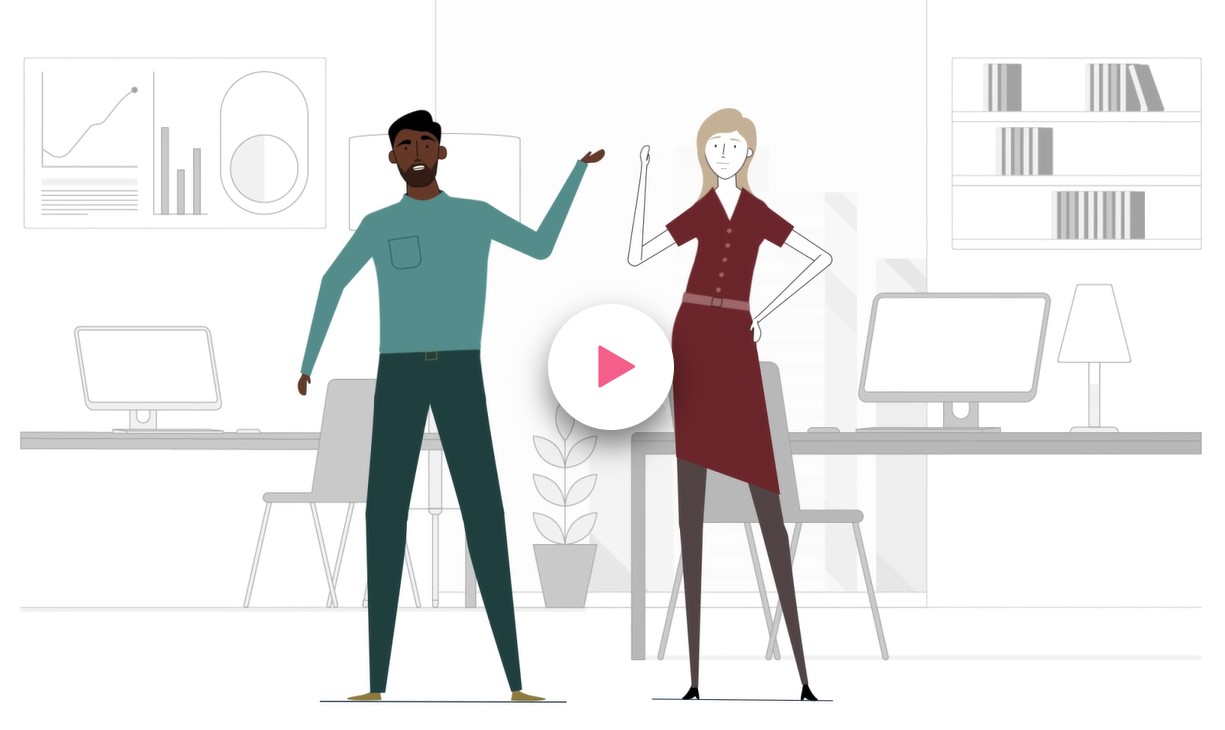
After viewing the video, our group identified that AI-assisted video creation can be a solution for communication projects that often receive limited attention and budget, such as:
External communications:
- Product descriptions
- Platform demos
- Customs advice
- Product or service specifications
- Regulatory advice
Internal communications:
- Health and safety materials
- Employee handbooks
- Systems training
- Onboarding documents
- Policy materials
AI platform review: Midjourney
Midjourney is a generative AI program and service that produces images from natural language descriptions (called prompts). After submitting a prompt, Midjourney generates four different images, which you can then edit, or tailor your prompt to refine the concepts. Midjourney can create any style of image you can think of. Within our Midjourney platform review, we cover how to use it, subscriptions and licensing, prompt writing, and the pros and cons of using the platform from a communications perspective. You can download the full platform review here.
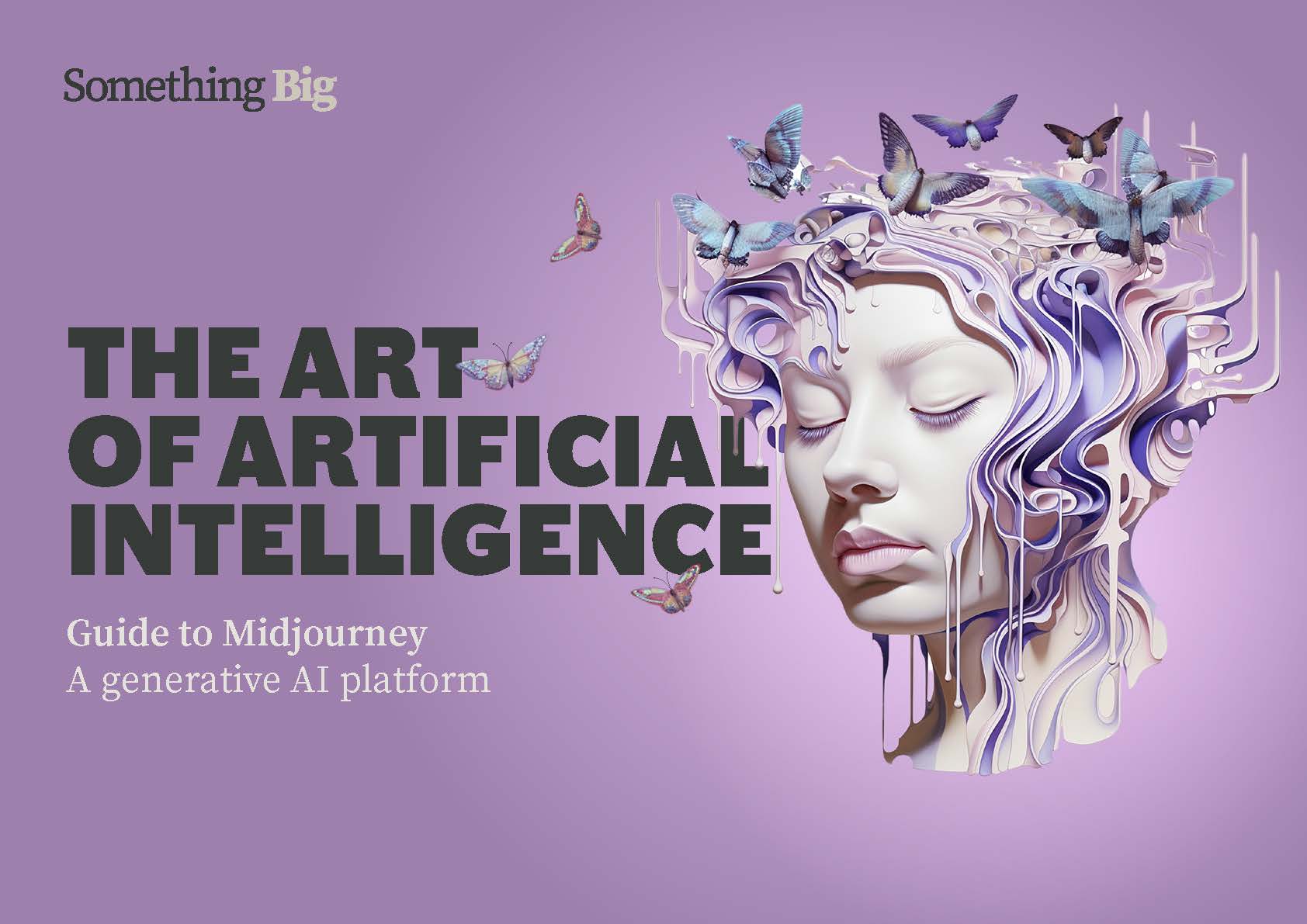
Navigating AI together: overcoming bias and achieving inclusion
In our next session we will examine the issue of the biases embedded in AI and explore how we can mitigate this bias and harness AI tools to foster greater inclusion and authentic representation.
The art of AI: Midjourney guide and review
By Sally Pritchett
CEO
Download our free Midjourney guide and review.
Are you considering if Midjourney could be the right platform for you? Our creative team have put the AI tool to the test. Within this free guide we cover:
- How to use Midjourney
- Subscriptions and licensing
- Prompt writing
- The pros and cons from a communications perspective
What is Midjourney?
Midjourney is a generative artificial intelligence program and service. It generates images from natural language descriptions, called “prompts”. After submitting a prompt Midjourney will generate four different images to choose from, at which point you can then edit or tailor your prompt to refine your concept. From illustration to hyper-realism, Picasso to pixel art, Midjourney can create any style of image you can think of and a whole world you haven’t.
Is Midjourney for commercial use?
All Midjourney subscriptions and plans have general commercial terms, meaning outputs can be used as you wish, but they’re not exclusively yours. Images can be used and modified by other users within the Discord community. Essentially everything you create with Midjourney can be used by Midjourney and anyone else as well. You can’t copyright an image either.
Want to find out about how Midjourney could impact your communications? Get in touch.
Download your free guide to Midjourney
Inspiring wellbeing with workplace design
By Sally Pritchett
CEO
Discover how to create a working environment that promotes employee health and wellbeing.
Working environments matter. They shape how we work and the way we feel. If organisations want to attract and retain talent, then a thoughtfully designed workspace can help improve the employee experience.
By designing an office space with wellbeing in mind, you can lay the foundation for a thriving, engaged and fulfilled workforce. Natural plants and lighting are shown to reduce stress levels, and different types of spaces can help foster creativity and collaboration.
People-first workspaces demonstrate a company’s commitment to the health and wellbeing of their employees. But how can you elevate a functional workspace into something much more?
Case study: Enhancing employee wellbeing for DHL Express in Stockholm
Committed to enhancing employee mental and physical wellbeing, DHL Express wanted to revitalise its Stockholm HQ. This office makeover was about more than just aesthetics; it was about inspiring a healthy, fulfilling life for every employee.
We were tasked with making wellbeing an integral part of the workspace. They wanted a welcoming, human-centric work environment that had wellness woven into the very fabric of the building.
Creating a hub for employee wellbeing
So, how did we go about turning a workplace into a wellbeing hub?
1. Design for wellbeing
We crafted designs for 25 spaces, integrating calming elements like wellbeing messaging, wall designs, foliage, artwork and natural wood furnishings.
2. Nature’s boost
We ensured that natural light and greenery flooded the spaces, positively impacting physical and mental wellbeing by bringing the outside in.
3. Motivational messaging
We included motivational messages that were meaningful, respectful and significant, relating to DHL’s brand heritage or to health and wellbeing.
5. Cultural fusion
We brought the local culture alive through room themes and art, fostering unity and a strong sense of belonging among employees.
The Sweden HQ was transformed into a welcoming workspace that everyone could thrive in. By prioritising wellbeing, DHL Express recognised that they could help employees feel happier, healthier, and more motivated than ever before.
Let’s talk about turning your workspace into a hub for wellbeing.
We're one of UK’s Best Workplaces in Consulting & Professional Services
By Sally Pritchett
CEO
As a creative communications agency, we've always put our people at the heart of our success, and this recognition underlines our strong commitment to creating a positive and thriving workplace culture.
We’re excited to share some fantastic news: Something Big has earned a spot in the respected UK’s Best Workplaces in Consulting & Professional Services™ list by Great Place to Work®. In the world of professional services, every interaction our team has with our clients, every project they complete, and every deadline they meet, contributes to our success. Our approach has always been simple but powerful: when our team feel happy, respected, psychologically safe and connected to our purpose, our creative is powerful, our clients succeed, and our business flourishes.
What is the UK’s Best Workplaces in Consulting & Professional Services list?
The UK’s Best Workplaces in Consulting & Professional Services™ list encompasses a broad range of knowledge-intensive roles, from legal services to management consultancy, engineering, marketing and advertising, telecoms, real estate, recruitment, travel management and more. It showcases the rich diversity of talents driving the industry forward.
The Best Workplaces in Consulting and Professional Services™ list is created using anonymous feedback from employees working in the industry about their workplace experience. The surveys asked employees to comment on how their company supports their work-life balance, sense of fulfilment, job satisfaction, psychological safety and financial security. Evaluations also included an assessment of how well the organisation was able to deliver consistency of their employee experience across all departments and seniority levels.
Benedict Gautrey, Managing Director of Great Place To Work® UK said: “While navigating this ever-changing landscape, the Best Workplaces in Consulting & Professional Services have galvanised their people proposition by placing employee wellbeing at the forefront of their company cultures – and enjoyed better business performance and staff retention as a result. It’s great to see so many examples of organisations making their workplaces truly ‘great’.”
Our commitment to our culture
At Something Big, nurturing a thriving workplace culture is vital to the success of our business. This belief has been embedded in our values for 25 years, and now, as an employee-owned certified B Corp, our dedication to our people is stronger than ever. To discover how we maintain an outstanding culture for our business’s success, check out our CEO’s article.
Join us on this journey
If you’re on a mission to foster a positive workplace culture and are looking for a creative communications agency that not only partners with one of the World’s Best Workplaces™, but also lives and breathes those principles within its own team, we’d love to hear from you.
Reaching the frontline: How to engage hard-to-reach employees
By Sally Pritchett
CEO
Discover how to effectively engage hard-to-reach employees with inclusive internal communications.
Accessible and inclusive internal communications play a key part in creating and maintaining a thriving workforce. But when it comes to large, multi-level organisations, how do you communicate to such a wide and varied audience?
Frontline workers in particular pose a unique challenge as, by the very nature of their active job role, they are usually the hardest to reach. Without access to a laptop or sometimes even a work email account, it’s a challenge to ensure these employees are receiving important messages and are aligned with company values.
And although being away from a desk can have plenty of benefits, it’s these frontline workers who could benefit the most from inclusive communications. By reaching these employees, we can help them avoid any feelings of isolation or disconnectedness from the business while they are out on the frontline.
So, what is the best way to reach every employee, even those that are hard-to-reach? Clear and accessible communications, cutting through the noise and using a wide range of channels are just a few ways we can make sure our messages are engaging the whole workforce.
Case study: Launching a global employee app for DHL Express
DHL Express asked us to help them launch Smart Connect – an internal employee app and social intranet for DHL employees to help manage their work and stay connected. The aim of the app was to connect all 120k employees, providing news, HR services and info pages.
They explained that uptake of a previous internal app had been low, so it was important to get this launch right so the new app didn’t suffer the same fate.
We needed to be able to engage a diverse range of employees – across borders, language barriers and hugely different roles. It was also important that people felt confident to download the app onto their own personal devices, as many frontline workers didn’t have access to a work computer.
The client had also found that although DHL Express has a strong and consistent brand identity, this wasn’t always resonating with employees for internal communications.
Our approach to engaging hard-to-reach employees
So, how did we go about grabbing the attention of thousands of employees across offices, service centres, and out on the frontline?
-
We gathered employee feedback
We wanted to understand the barriers to adoption, the challenges of reaching the workforce and what would capture DHL employees’ attention.
-
We dived deep into the app experience
Training calls helped us better understand the app’s key features. This meant we could focus the campaign on areas that would have the biggest impact on employee experience.
-
We stepped away from the norm
By using bespoke and attention-grabbing illustrations, we ensured the launch would have cut-through amongst other internal communications.
-
We created a ‘portal to possibility’
We positioned the employee’s phone as the doorway into the world of DHL Express. Bright and energetic depictions of employees interacting with messages and pages leapt out of the phone, larger than life.
-
We used a wide variety of comms channels
With highly diverse employees based all over the world, we rolled out the campaign across a variety of channels including posters, internal TV screens and roadshows. We knew we had to make the comms as engaging and accessible as possible to be able to reach everyone across the business.
By working closely with the DHL Express team, we were able to successfully roll out the ‘A portal to possibility’ campaign. The innovative approach combined with accessible content captivated employees, surpassed prior downloads and engaged all regions and roles.
Let’s talk to see how we can help you create highly inclusive and human-centric campaigns that engage hard-to-reach employees.
AI prompt guide for communications professionals
By Sally Pritchett
CEO
Download our AI prompt guide for communications professionals and start leveraging the power of AI.
AI is a tool, not a replacement. Our AI prompt guide for communications professionals empowers you to wield AI effectively in your content creation journey. It’s about enhancing, not replacing, your unique perspective and creativity. Harnessing the capabilities of AI has become a necessity for staying ahead, as the rise of AI tools, like ChatGPT, has revolutionized the way we approach research and content creation.
Getting started with AI
Our AI prompt guide is designed to be your go-to companion on your AI journey. Whether you’re new to AI or looking to refine your prompting skills, this guide is your roadmap to effective content creation. It offers easy-to-follow instructions on creating prompts that yield useful results, ensuring your interactions with AI are both productive and efficient.
Train ChatGPT to write in your brand voice
Discover how to craft prompts that align with your brand’s unique writing style and communication goals.
Download Your AI Prompt Guide
Ready to harness the power of AI to elevate your content creation? Don’t miss out on the AI Prompt Guide for Communicators. Download your copy now.
Stay ahead, stay creative, and let AI amplify your impact.
Download your free prompt guide here









